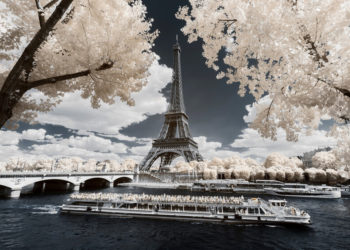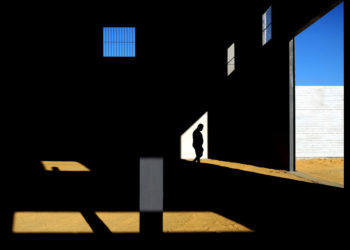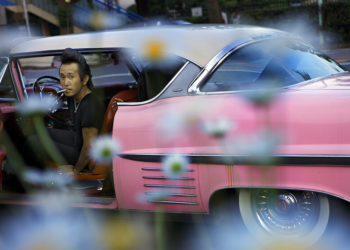home
>
Blog
>
Photography
>
Tilt shift effect: you wish you had read this guide before
Tilt shift effect: des …
While a camera is different from the human eye, when it comes to perspective, what a traditional lens captures is quite close to what the human eye sees. But, if we add a tilt shift lens to the camera there are many possibilities to alter that perspective and get a “miniature” effect.
Then,what exactly is a tilt shift lens and what is it for? In this article we will tell you what the best uses are and we will share everything you need to know about this incredible photography lens. 🙌
Index:
- What is the best lens for architectural photography?
- What is tilt shift?
- How to use a tilt shift lens?
- Five ways to use a tilt shift lens
- Tips for taking the best tilt shift photos
If you want to do architectural photography and you want your photos to make a difference, tilt shift lenses will be your best allies. They provide many advantages, since they allow you to straighten the lines when you take the photograph.
However, these lenses are more expensive and are intended for professionals, but it is an alternative that can save you a considerable amount of time and improve the quality of your photos.

Source: Fix The Photo
The main characteristic of a tilt shift lens is that the inner optics can be tilted and shifted relative to the camera sensor. Newer lenses also rotate, allowing it to tilt and move in different directions.
These lenses are manufactured with perspective correction in mind and help maximize or minimize depth of field in photography. Tilt shift lenses are made up of 3 sections that allow you to tilt and move the optics. This offers two main benefits:
- The ability to change the angle of the axis of the focus plane and influence the depth of field without changing the aperture of the diaphragm
- The ability to change perspective without having to change the parallelism between the lens and the photographed subject
Among those who have not used it (yet), there is a certain mystery and taboo surrounding the tilt shift lens. It may be that this is the least known lens among DSLR lenses. It is also true that when using this lens, many people do not take advantage of its capacity and its characteristics to 100%. The main reason is that compared to normal lenses, the tilt shift lens is very different from the rest.
It should also be noted that some models of tilt shift lenses allow the tilt and shift orientation to be set independently, which greatly increases the flexibility of this type of lens. The tilt shift is a widely used resource for making time lapse videos.

Do you want to know how to take product photography at home? Discover everything you need to know to enrich the quality of your photos with this free guide
Tilt shift lens features
Knobs and Buttons
The first thing we can notice in the tilt shift lenses is the presence of 4 knobs and at least one rotation button. Two of them are used to maintain the tilt and shift of the lens, while the other two knobs are used to regulate the angle of movement (tilt and shift).

Source: Open Sub Photo
Tilt
The tilt function –or tilt– makes the plane of the lens and the image sensor not parallel. This may seem very complicated, but this function can change your focus plane to a great extent.
In a typical photography lens, the plane of focus and the plane of the sensor are parallel. What does this mean? That if you focus on an object 180 meters away, all objects that are 180 meters away will also be in focus.
If you tilt the lens to the left or right, you will change the way the two planes interactas the plane of focus passes vertically through the frame. This means that everything from the front to the back of the frame will come out in sharp focus.
When using a relatively wide aperture, the areas to the left and right of the image will gradually blur.
Shift
Compared to the image sensor, the shift function –or displacement– from the lens makes the optical system of the lens move. These lenses are designed to project a larger image circle than typical lenses. By moving the lens, you can photograph your subject from different camera positions. This feature allows you to photograph buildings without converging verticals.
To do this, the camera must be positioned horizontally and pointed directly at the building. Next, you need to move the camera up to include the top of the building.

All tilt shift lenses are manual focus, but this function can only work when the focal plane is parallel to the sensor plane. The advantage of these lenses is that when you tilt or shift it, you can see how the lens will move, allowing you to immediately preview the effect you will achieve.
Shift
On the tilt shift lens, there are two adjustable knobs on the left and right sides, which allow you to move the lens to either side. Moving the lens to the left will move your focal point to the right. This sounds counterintuitive, but it is because the area is now closer to the sensor plane.
By placing your focal point on the right, everything to the left will lose focus. This technique is very useful when the object or area we want to focus on is to the right and away from the camera and vice versa. Moving the lens to the right will place the focus point on the left side of the frame.
With the shift option, you have up to 12mm to shift. The best part is that you can achieve a great depth of field with a fairly wide aperture, like f / 2.4.
Tilt
To tilt the lens, you have to use the two knobs that are on the top and bottom of the lens. If you tilt the lens, will give the impression that the camera is positioned much higher.
If you are at the bottom of a building, you should tilt the lens up to correct for converging vertical lines. If you are on top of a building or structure and you want to shoot a photo, you need to tilt the lens down.
Given the lens tilt and shift functions are independent of each other, each one can rotate 90 degrees. This means that you can place it at the top or bottom of the frame instead of using the lens shift to move the focus area left or right. The same is true for tilt.
The tilt shift effect is commonly used for the following types of photography:
Architectural photography
The tilt shift lens is ideal for photography architecture or urban landscapes. To achieve perfect rectilinear photos, it is advisable to position the lens parallel to the ground and perpendicular to the subject or building that we want to portray. You can also use a wide angle lens to fit the entire building in your frame. 🏙️

Source: Yellow Korner
Anyway, the vertical lines probably converge instead of appearing straight. With the shift knob you can fix this problem, since the buildings will look like the human eye sees them and without any visual distortion.
Landscape photography
The same values of architectural photography also apply to landscape photography. For example, if you want to photograph trees or mountains, the shift effect will also help you prevent the lines from coming together. 🗻

Source: Jooin
Miniature effect
The tilt knob also makes the scenes you capture look like miniatures. This is because the shallow depth of field and blurring of the entire image resemble the look of macro photography.

Source: Pinterest
Pictures
The tilt option provides many selective focus opportunities and this is quite interesting for wedding photography or portraits. If you tilt the plane of focus to keep some elements in focus while blurring the background, you will achieve a very impressive portrait.

Source: Digital Photography School
Product photography
In product photography, if you can’t focus on the product with a small aperture, you can tilt the focus plane so that the subject and background stay in focus and sharp. Besides, you can also blur everything except the subject. This technique is used a lot in food or food photography.

Source: Two Loves Studio

These tips will be very useful to take photos that stand out for their originality:
Take photos from above
If you want to make your objects look like a miniature object, try shooting your photos from a higher position, such as a balcony, the top floor of a tall building, or a ceiling. As a result, you will achieve the tilt shift effect, also known as the diorama effect.
Imitate the tilt shift effect in Photoshop
If you have Photoshop installed and you don’t have a tilt shift lens, you can mimic the effect! The program comes with blur filters, including one for tilt shift. With this filter you can mimic the miniature effect quite well and it is not difficult to use at all.
In fact, you can also select focus areas to your liking. To make the blur effect more or less intense, you can slide the blur effect bar until you get the result you want. You can also change the position of the filter or adjust it in your own way.
Pick a subject that grabs attention
This will be key for your tilt shift photography to be stunning. If the subject does not attract attention, no one will understand what you want to communicate with your photo. For example, you could show the vastness of a crowded stadium or a church with a striking design.
Use a tripod
It is very difficult to get a good tilt shift photograph if you don’t shoot with a tripod. They don’t have to be overly heavy or large tripods. If you are going to photograph with a tilt shift lens, it is essential to use a tripod, so get used to it.
Take photos of buildings
If you pay attention, you will surely see many types of buildings in the city. You will see workers wearing uniforms and many machinery such as tractors or cranes that look like toys. A construction scene is much more striking than a typical city photo. 🏗️
It is a great opportunity to tell a story. Generally, tilt shift photos provide a deeper insight into the scales and sizes of things.
Now you know what the tilt shift effect is, you learned how to take good photographs and you know the best tips to make your photos more original and impressive. I hope this article has helped you to improve the quality of your photos.Keep practicing and share your tilt shift photos with us!
Until next time! 🚀

![📷 Tilt shift: The most essential guide on the web [2021]](https://big-photography.com/wp-content/uploads/2021/03/blog_2-1140x570.jpg)




![📸 Guide to black and white photography: be an expert [2021]](https://big-photography.com/wp-content/uploads/2021/03/fotografia-blanco-negro-75x75.jpg)
![📸 Advertising photography: What is it and what is it for? [2021]](https://big-photography.com/wp-content/uploads/2021/03/blog_3-75x75.jpg)
Discussion about this post